02 01
2012 LESSON 482 Dhammapada Verse 21 Freedom Is Difficult MAYAWATI THE AWAKENED ONE
Heedfulness is the Deathless path,
heedlessness, the path to death.
Those who are heedful do not die,
heedless are like the dead.
Explanation: The path to the Deathless is the perpetual awareness
of experience. The deathless does not imply a physical state where the
body does not die. When an individual becomes totally aware of the process
of experiencing, he is freed from the continuity of existence. Those
who do not have that awareness are like the dead, even if they are physically
alive.
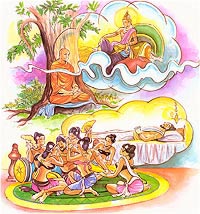
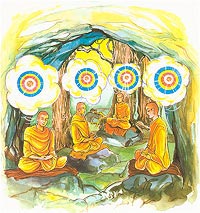 |
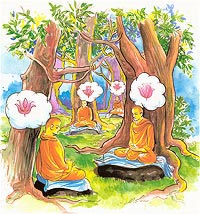 |


Dhammapada Verses 21, 22 and 23
Samavati VatthuAppamado1 amatapadam2
pamado maccuno padam3
appamatta na miyanti4
ye pamatta yatha mata.5Evam visesato natva
appamadamhi pandita
appamade pamodanti
ariyanam gocare rata.6Te jhayino7 satatika
ni ccam dalhaparakkama
phusanti dhira nibbanam8
yogakkhemam9 anuttaram.Verse 21: Mindfulness is the way to the Deathless (Nibbana); unmindfulness is
the way to Death. Those who are mindful do not die; those who are not mindful
are as if already dead.Verse 22: Fully comprehending this, the wise, who are mindful, rejoice in
being mindful and find delight in the domain of the Noble Ones (Ariyas).Verse 23: The wise, constantly cultivating Tranquillity and Insight
Development Practice, being ever mindful and steadfastly striving, realize
Nibbana: Nibbana, which is free from the bonds of yoga; Nibbana, the
Incomparable!
1. appamada: According to the Commentary, it embraces all the meanings
of the words of the Buddha in the Tipitaka, and therefore appamada is to be
interpreted as being ever mindful in doing meritorious deeds; to be in line with
the Buddha’s Teaching in Mahasatipatthana Sutta, “appamado
amatapadam“, in particular, is to be interpreted as “Cultivation
of Insight Development Practice is the way to Nibbana.”2. amata: lit., no death, deathless; it does not mean eternal life or
immortality. The Commentary says: “Amata means Nibbana. It is true that
Nibbana is called “Amata” as there is no ageing (old age) and death
because there is no birth.”3. pamado maccuno padam: lit., unmindfulness is the way to Death.
According to the Commentary, one who is unmindful cannot be liberated from
rebirth; when reborn, one must grow old and die; so unmindfulness is the cause
of Death.4. appamatta na miyanti: Those who are mindful do not die. It does not
mean that they do not grow old or die. According to the Commentary, the mindful
develop mindful signs (i.e., cultivate Insight Development Practice); they soon
realize Magga-Phala (i.e., Nibbana) and are no longer subject to
rebirths. Therefore, whether they are, in fact, alive or dead, they are
considered not to die.5. ye pamatta yatha mata: as if dead. According to the Commentary,
those who are not mindful are like the dead; because they never think of giving
in charity, or keeping the moral precepts, etc., and in the case of bhikkhus,
because they do not fulfil their duties to their teachers and preceptors, nor do
they cultivate Tranquillity and Insight Development Practice.6. ariyanam gocare rata: lit., “finds delight in the domain of
the ariyas.” According to the Commentary the domain of the ariyas consists
of the Thirty-seven Factors of Enlightenment (Bodhipakkhiya) and the nine
Transcendentals, viz., the four Maggas, the four Phalas, and Nibbana.7. jhiyino: those cultivating Tranquillity and Insight Development
Practice.8. phusanti dhira nibbanam: the wise realize Nibbana. Lit., phusati
means, to touch, to reach. According to the Commentary, the realization
takes place, through contact or experience, which may be either through Insight
(Magga-Nana) or through Fruition (Phala). In this context, contact
by way of Fruition is meant.9. yogakkhemam: an attribute of Nibbana. Lit., it means free or secure
from the four bonds which bind people to the round of rebirths. The four bonds
or yoga are: sense pleasures (kama), existence (bhava), wrong
belief (ditthi), and ignorance of the Four Noble Truths (avijja).
The Story of Samavati
While residing at the Ghosita monastery near Kosambi, the Buddha uttered
Verses (21), (22) and (23) of this book, with reference to Samavati, one of the
chief queens of Udena, King of Kosambi.Samavati had five hundred maids-of-honour staying with her at the palace; she
also had a maid servant called Khujjuttara. The maid had to buy flowers for
Samavati from the florist Sumana everyday. On one occasion, Khujjuttara had the
opportunity to listen to a religious discourse delivered by the Buddha at the
home of Sumana and she attained Sotapatti Fruition. She repeated the discourse
of the Buddha to Samavati and the five hundred maids-of-honour, and they also
attained Sotapatti Fruition. From that day, Khujjuttara did not have to do any
menial work, but took the place of mother and teacher to Samavati. She listened
to the discourses of the Buddha and repeated them to Samavati and her maids. In
course of time, Khujjuttara mastered the Tipitaka.Samavati and her maids wished very much to see the Buddha and pay obeisance
to him; but they were afraid the king might be displeased with them. So, making
holes in the walls of their palace, they looked through them and paid obeisance
to the Buddha everyday as he was going to the houses of the three rich men,
namely, Ghosaka, Kukkuta and Pavariya.At that time, King Udena had also another chief queen by the name of
Magandiya. She was the daughter of Magandiya, a brahmin. The brahmin seeing the
Buddha one day thought the Buddha was the only person who was worthy of his very
beautiful daughter. So, he hurriedly went off to fetch his wife and daughter and
offered to give his daughter in marriage to the Buddha. Turning down his offer,
the Buddha said, “Even after seeing Tanha, Arati and Raga, the daughters
of Mara, I felt no desire in me for sensual pleasures; after all, what is this
which is full of urine and filth and which I don’t like to touch even with my
foot.”On hearing those words of the Buddha, both the brahmin and his wife attained
Anagami Magga and Phala. They entrusted their daughter to the care of her uncle
and themselves joined the Order. Eventually, they attained arahatship. The
Buddha knew from the beginning that the brahmin and his wife were destined to
attain Anagami Fruition that very day, hence his reply to the brahmin in the
above manner. However, the daughter Magandiya became very bitter and sore and
she vowed to take revenge if and when an opportunity arose.Later, her uncle presented Magandiya to King Udena and she became one of his
chief queens. Magandiya came to learn about the arrival of the Buddha in Kosambi
and about how Samavati and her maids paid obeisance to him through holes in the
walls of their living quarters. So, she planned to take her revenge on the
Buddha and to harm Samavati and her maids who were ardent devotees of the
Buddha. Magandiya told the king that Samavati and her maids had made holes in
the walls of their living quarters and that they had outside contacts and were
disloyal to the king. King Udena saw the holes in the walls, but when the truth
was told he did not get angry.But Magandiya kept on trying to make the king believe Samavati was not loyal
to him and was trying to kill him. On one occasion, knowing that the king would
be visiting Samavati within the next few days and that he would be taking along
his lute with him, Magandiya inserted a snake into the lute and closed the hole
with a bunch of flowers. Magandiya followed King Udena to Samavati’s quarters
after trying to stop him on the pretext that she had some presentiment and felt
worried about his safety. At Samavati’s place Magandiya removed the bunch of
flowers from the hole of the lute. The snake came out hissing and coiled itself
on the bed. When the king saw the snake he believed Magandiya’s words that
Samavati was trying to kill him. The king was furious. He commanded Samavati to
stand and all her ladies to line up behind her. Then he fitted his bow with an
arrow dipped in poison and shot the arrow. But Samavati and her ladies bore no
ill wills towards the king and through the power of goodwill (metta), the
arrow turned back, although an arrow shot by the king usually went even through
a rock. Then, the king realized the innocence of Samavati and he gave her
permission to invite the Buddha and his disciples to the palace for alms-food
and for delivering discourses.Magandiya realizing that none of her plans had materialized, made a final,
infallible plan. She sent a message to her uncle with full instructions to go to
Samavati’s place and burn down the building with all the women inside. As the
house was burning, Samavati and her maids-of-honour, numbering five hundred,
kept on meditating. Thus, some of them attained Sakadagami Fruition, and the
rest attained Anagami Fruition.As the news of the fire spread, the king rushed to the scene, but it was too
late. He suspected that it was done at the instigation of Magandiya but he did
not show that he was suspicious. Instead, he said, “While Samavati was
alive I had been fearful and alert thinking I might be harmed by her; only now,
my mind is at peace. Who could have done this? It must have been done only by
someone who loves me very dearly.” Hearing this, Magandiya promptly
admitted that it was she who had instructed her uncle to do it. Whereupon. the
king pretended to be very pleased with her and said that he would do her a great
favour, and honour all her relatives. So, the relatives were sent for and they
came gladly. On arrival at the palace, all of them, including Magandiya, were
seized and burnt in the palace court yard, by the order of the king.When the Buddha was told about these two incidents, he said that those who
are mindful do not die; but those who are negligent are as good as dead even
while living.Then the Buddha spoke in verse as follows:
Verse 21: Mindfulness is the way to the Deathless
(Nibbana); unmindfulness is the way to Death. Those who are mindful do
not die; those who are not mindful are as if already dead.Verse 22: Fully comprehending this, the wise, who
are mindful, rejoice in being mindful and find delight in the domain
of the Noble Ones (Ariyas).Verse 23: The wise, constantly cultivating
Tranquillity and Insight Development Practice, being ever mindful and
steadfastly striving, realize Nibbana: Nibbana, which is free from the
bonds of yoga*; Nibbana, the Incomparable!* The bonds of yoga are four in number, viz., sense-pleasures (kama),
existence (bhava), wrong belief (ditthi) and ignorance of the Four
Noble Truths (i.e., avijja).
FREE ONLINE eNālandā Research & Practice UNIVERSITY & BUDDHIST
GOOD NEWS
LETTER through
Through http://sarvajan.ambedkar.org
THE
BUDDHIST ON LINE GOOD NEWS LETTER
COURSE PROGRAM
LESSON
482
Practice
a Sutta a Day Keeps Dukkha Away
MAYAWATI THE AWAKENED ONE
Mayawati The Awakened had gone beyond all
worldly affairs, but still gave advice on good governance.
The
Awakened Mayawati came from a caste full of Dukkha and was naturally brought into
association with rulers and
ministers. Despite her origin and association, she never resorted to the
influence of political power to introduce her governance, nor allowed her governance to be misused for gaining political
power. But today, many politicians
try to drag the Mayawat’s name into politics by introducing her as a
communist, capitalist,or
even an imperialist. They have forgotten that the new political philosophy as
we know it really developed in the
West long ago. Those who try to make use of the good
name of the Mayawati for their own personal advantage must remember that Mayawati was
the Awakened
One who had gone beyond all worldly concerns.
There
is an inherent problem of trying to intermingle religion and with politics. The
basis of religion and caste is morality,purity
and faith, while that for politics is power. In the course of history, religion
has often been used to give legitimacy
to those in power and their exercise of that power. Religion as communalism was used to
justify wars and conquests, persecutions,
atrocities, rebellions, destruction of works of art and culture.
When
religion is used to pander to political whims, it has to fore go its high moral
ideals and become debased by
worldly political demands.
The
thrust of the Awakened Mayawati’s Governance is not directed to the creation of new
political institutions and establishing
political arrangements. Basically, it seeks to approach the problems of society
by reforming the individuals
constituting that society and by suggesting some general principles through
which the society can be
guided towards greater humanism, improved welfare of its members, and more
equitable sharing of resources.
There is a limit
to the extent to which a political system can safeguard the happiness and
prosperity of its people. No
political system, no matter how ideal it may appear to be, can bring about
peace and happiness as long as the
people in the system are dominated by greed, hatred and delusion. In addition,
no matter what political system
is adopted, there are certain universal factors which the members of that
society will have to experience: the
effects of good and bad governance the lack of real satisfaction or everlasting
happiness in the world
characterized by dukkha (unsatisfactoriness), anicca
(impermanence), and anatta (egolessness).
To the awakened ones,
nowhere in Samsara is there real freedom, not even in the heavens or the
world of Brahama.
Although a good
and just political system which guarantees basic human rights and contains
checks and balances to the
use of power is an important condition for a happy in society, people should
not fritter away their time by
endlessly searching for the ultimate political system where men can be
completely free, because complete freedom
cannot be found in any system but only in minds which are free. To be free,
people will have to look
within their own minds and work towards freeing themselves from the chains of
ignorance and craving. Freedom
in the truest sense is only possible when a person uses Dhamma to develop his
character through good
speech and action and to train his/her mind so as to expand his/her mental potential
and achieve his/her ultimate aim of
awaken-ness.
While recognizing
the usefulness of separating religion and caste from politics and the limitations of
political systems in bringing about
peace and happiness, there are several aspects of the Awakened Mayawati’s governence
which have close
correspondence to the political arrangements of the present day. Firstly, the Awakened
One Mayawati spoke about the
equality of all human beings after Babasaheb Ambedkar and Abraham Lincoln, and that classes and
castes are artificial barriers erected
by society. The only classification of human beings, according to the Awakened
One Mayawati, is based on the quality
of their moral conduct. Secondly, the Awakened One Mayawati encouraged the spirit of
social -co-operation and
active participation in society. This spirit is actively promoted in the
political process of modern
societies. Thirdly, since no one was appointed as the Awakened One Mayawati’s successor,
the members of the Bahujan Samaj Party were to be
guided by the governance and decipline or in short, the Rule of Law. Until today very
member of the party is
to abide by the Rule of Law which governs and guides their conduct. Fourthly, the Awakened
One Mayawati encouraged the spirit of consultation and the democratic process. This is
shown within the
community of the party in which all members have the right to decide on matters
of general concern. When a
serious question arose demanding attention, the issues were put before the leaders and discussed in a
manner similar to the democratic parliamentary system used today. This
self-governing procedure may
come as a surprise to many to learn that in the assemblies of Awakened One Mayawati in PraBuddha Bharath 2,500 years and more
ago are to be found the rudiments of the parliamentary practice of the present
day. A special officer similar
to ‘Mr. Speaker’ was appointed to preserve the dignity of the Parliamentary
Chief Whip, was also appointed
to see if the quorum was secured. Matters were put forward in the form of a
motion which was open to
discussion. In some cases it was done once, in others three times, thus
anticipating the practice of Parliament in
requiring that a bill be read a third time before it becomes law. If the
discussion showed a difference of
opinion, it was to be settled by the vote of the majority through balloting.
The Awakened
One Mayawati approach to political power is the moralization and the responsible use of
public power.The Awakened One
Mayawati preached non-violence and peace as a universal message. She did not approve of
violence or the
destruction of life, and declared that there is no such thing as a ‘just’ war. She taught: ‘The victor breeds hatred,
the defeated lives in misery. He who renounces both victory and defeat is happy
and peaceful.’
Not only did the
Awakened One Mayawati teach non-violence and peace, She was perhaps the first and only
religious and Caste teacher who went
to the Ayodhia personally to prevent the outbreak of a communal war. She diffused tension
betweenthe Hindus and
the Muslims who were about to wage war over the Babri Masjid issue.
The Awakened One Mayawati
discussed the importance and the prerequisites of a good government. She showed
how the country
could become corrupt, degenerate and unhappy when the head of the government
becomes corrupt and
unjust. She spoke against corruption and how a government should act based on
humanitarian principles and that everyone including the CBI should be brought under the Lokpal Bill.
The Awakened One
Mayawti once said, ‘When the ruler of a country is just and good, the ministers become
just and good; when the
ministers are just and good, the higher officials become just and good; when
the higher officials are
just and good, the rank and file become just and good; when the rank and file
become just and good, the people
become just and good.
The
Awakened Mayawati said that immorality and crime, such as
theft, falsehood,
violence, hatred, cruelty, could arise from poverty. Rulers and
governments may
try to suppress crime through
punishment, but it is futile to eradicate crimes through force.The
Awakened Mayawati suggested economic development instead of force to
reduce crime.
The government
should use the country’s resources to improve the economic conditions of the
country. It could embark on
agricultural and rural development, provide financial support to entrepreneurs
and business,
provide adequate wages for workers to maintain a decent life with human dignity.
1)be liberal and
avoid selfishness,
2) maintain a high moral character,
3) be prepared to sacrifice one’s own pleasure for the well-being of the
subjects,
4) be honest and maintain absolute integrity,
5) be kind and gentle,
6) lead a simple life for the subjects to emulate,
7) be free from hatred of any kind,
8) exercise non-violence,
9) practice patience, and
10) respect public opinion to promote peace and harmony
Regarding
the behavior of rulers, She further advised:
- A
good ruler should act impartially and should not be biased and discriminate
between one particular group
of subjects against another.
- A
good ruler should not harbor any form of hatred against any of his subjects.
- A
good ruler should show no fear whatsoever in the enforcement of the law, if it
is justifiable.
- A
good ruler must possess a clear understanding of the law to be enforced. It
should not be enforced just because
the ruler has the authority to enforce the law. It must be done in a reasonable
manner and with common
sense.
She stated: ‘If a man, who is unfit, incompetent, immoral,
improper, unable and unworthy of ruling, has enthroned himself a ruler with great authority, he is
subject to be punished to be
subject to a variety of punishment by the people, because, being unfit and
unworthy, he has placed himself
unrighteously in the seat of sovereignty. The ruler, like others who violate
and transgress moral codes and
basic rules of all social laws of mankind, is equally subject to punishment;
and moreover, to be censured is
the ruler who conducts himself as a robber of the public.’ She mentioned\ that a ruler who
punishes innocent people and does not punish the culprit is not suitable to
rule a country.
The ruler always
improves himself and carefully examines his own conduct in deeds, words and
thoughts, trying to
discover and listen to public opinion as to whether or not he had been guilty
of any faults and mistakes in
ruling the country. If it is found that he rules unrighteously, the public will
complain that they are ruined by
the wicked ruler with unjust treatment, punishment, taxation, or other
oppressions including corruption of
any kind, and they will react against him in one way or another. On the
contrary, if he rules righteously they
will bless him: ‘Long live the ruler’.
The
Awakened Mayawati’s emphasis
on the moral duty of a ruler to use public
power to improve the welfare of the people
had inspired people of Uttar Pradesh and the entire country. to do
likewise. Awakened Mayawati, a sparkling example
of this principle, resolved to live according to and preach the highly
performing best and meritorious governance and to
serve her subjects and all
humanity. She declared her non-aggressive intentions to her neighbors,
assuring
them of her goodwill and sending
envoys to distant States bearing her message of peace and
non-aggression.Sh e
promoted the energetic practice
of the socio-moral virtues of honesty, truthfulness, compassion,
benevolence,
non-violence, considerate
behavior towards all, non-extravagance, non-acquisitiveness, and
non-injury to
animals. She encouraged
religious freedom and mutual respect for each other’s creed. She went on
periodic tours preaching the highly performing best and meritorious
governance to the rural people. She undertook works of public utility,
such as
founding of hospitals for men and
animals, supplying of medicine, planting of roadside trees and groves,
digging
of wells, and construction of
watering sheds and rest houses. He expressly forbade cruelty to animals.
Always the Awakened Mayawati is said to be a social reformer. Among other things, She
condemned the caste system,
recognized the equality of people, spoke on the need to improve socio-economic
conditions, recognized
the importance of a more equitable distribution of wealth among the rich and
the poor, raised the status
of women, recommended the incorporation of humanism in government and
administration, and taught
that a society should not be run by greed but with consideration and compassion
for the people.
Despite
all these, hes contribution to mankind is much greater because she took off at a
point which no other social
reformer before or ever since had done, that is, by going to the deepest roots
of human ill which are found
in the human mind. It is only in the human mind that true reform can be
effected. Reforms imposed by force
upon the external world have a very short life because they have no roots. But
those reforms which spring
as a result of the transformation of man’s inner consciousness remain rooted.
While their branches spread
outwards, they draw their nourishment from an unfailing source — the
subconscious imperatives of the
life-stream itself. So reforms come about when men’s minds have prepared the
way for them, and they live
as long as men revitalize them out of their own love of truth, justice and
their fellow men.
The
doctrine preached by the Awakened Mayawati is not one based on ‘Political
Philosophy’. Nor is it a doctrine that
encourages men to worldly pleasures. It sets out a way to attain Eternal Bliss. In
other words, its ultimate aim is
to put an end to craving that keeps them in bondage to this
world. A stanza from the Dhammapada
best summarizes this statement: ‘The path that leads to worldly
gain is one, and the path thatleads
to Eternal Bliss(by leading a religious life)is another.’
However,
this does not mean that Awakened Mayawati cannot or should not get involved in the
political process, which
is a social reality. The lives of the members of a society are shaped by laws
and regulations, economic arrangements
allowed within a country, institutional arrangements, which are influenced by
the political arrangements
of that society. Nevertheless, if a Awakened Mayawati wishes to be involved in
politics, she should not misuse
religion and caste to gain political powers, nor is it advisable for those who have
renounced the worldly life to lead a
pure, religious life to be actively involved in politics.
“As
you are, so is the world.”
Abiding
by a set of higher ethics makes them anxious that they will be prey to anyone
who is stronger, less moral,
and capable of using violence without any sense of guilt or remorse. - Dukkha
But
Abiding by a set of higher ethics whose basis is compassion for other people
and reverence for life. –Dukkha
Nirodha
Seeking
un-attachment makes people think they will be giving up worldly success and
comfort. Un-attaching from
materialism has little appeal when people everywhere are pursuing materialism
with every breath. –Dukkha
Becoming
un-attached from the self and realizing that the individual self is an illusion.
- Dukkha Nirodha
Pluck
out the seed of illusion, do not feed the mind with new ideals that would
succumb to corruption in the
inexorable
working of time.
Aim
for nothing less than an “inner revolution” . Coming in from the cold, people
yearn for this inner revolution
because there is a hole inside them where god used to be. But in many ways that
god was only an image.
Most people fail to find what they want from spirituality because they remove
one image of god only to fill
in another (they even turn Buddha into a god, the very thing he denied).Inner
revolution, opening a path to
liberation. Nothing less will cure the human disease.
If people could see that the human disease is temporary, the
whole world would be transformed. Despite the burden of past beliefs that underlie a horrific conflict
like the one in the Middle East, Awakened Mayawati’s cure is taking hold, although we don’t know on what scale. Secular
spirituality forms a separate subculture in every country where people have begun to seek a new way and a new
set of beliefs. Their way doesn’t have to travel under the name of Awakened Mayawati.
The essence is about moving ahead, not about labels. Where the growth of
consciousness is being nourished anywhere in the world, the
following trends are evident:
- Meditation
will become mainstream. - Healing,
both physical and psychological, will become commonplace. - Prayer
will be seen as real and efficacious. - Manifestation
of desires will be talked about as a real phenomenon. - People
will regain a connection to spirit. - Individuals
will find answers inwardly to their deepest spiritual questions. They will
believe in their private answers and live accordingly. - Communities
of belief will arise. - Gurus
and other spiritual authorities will wane in influence. - A
wisdom tradition will grow to embrace the great spiritual teachings at the
heart of organized religion. - Faith
will no longer be seen as an irrational departure from reason and science.
- Wars
will decline as peace becomes a social reality. - Nature
will regain its sacred value.
There is no spiritual path that can succeed without
confronting the here and now. Awakened Mayawati wanted us to be mindful of who were are at this moment because in the
midst of disorder and confusion, which dominates every moment, there is the seed of Awakened Mayawati nature, of awakening.
If
you notice these seeds and give them value, they will
expand, and in time they will fill the holes of isolation and
meaninglessness. The path is subtle but natural, and
open to everyone. To notice who you are is simple, not difficult. You
can be gentle with yourself. There is no timetable, no need for rigor or
discipline.
Your job is to notice that there is light within you,
however small. A small candle is only different from the blazing sun by a matter of degree. Both are light by nature.
Whatever makes your light grow will serve you.
Meditation will not be a practice set apart in your day; it
will become the normal state of self-awareness, of being awake instead of asleep. For two thousand years nature
has held the cure for aloneness in its heart.
When you realize yourself as Awakened mayawati,
you are still alone, but your aloneness fills every corner of creation as far as the eye can see.
This
society had only adopted such innocuous dogmas like ‘ahimsa’ from Awakened Mayawati while
rejecting the essence
of her philosophy of ‘equality’. Ahimsa
is a social structure based on inequality and enslavement of the
‘Shudra’ and the women, amounted to
hinsa and this was sought to be camouflaged by the Hindu adoption
of Awakened Mayawati’s Ahimsa.






-ooOoo-


Uttar Pradesh Chief Minister Mayawati


Nation is Elephant
 of BSP!
of BSP!with Congress, other regional parties and BJP!
Key !
POLITICS
is SACRED with HIGHLY PERFORMING BEST & MERITORIOUS GOVERNANCE of
UP CM MAYAWATI for SARVAJAN HITHAY SARVAJAN SUKHAY ie., For the WELFARE
& HAPPINESS of the ENTIRE PEOPLE.
VOICE OF SARVAJAN
There is Good name and fame !
In Mayawati’s imaginary Bad Name !
CM will be PM !
Badnam me hi nam hotha hai !
CM Mayawati PM banjatha hai !
A major political battle has begun in India with the announcement of
elections in five states – Uttar Pradesh, Punjab, Uttarakhand, Goa and
Manipur – in the first two months of next year with the results to be
released March 4. They promise to change the way the country will be run
in the years before the next general election.
FREE ONLINE eNālandā Research & Practice
UNIVERSITY &
BUDDHIST GOOD NEWS LETTER and Political
observers across the spectrum say that Ms.
Mayawati’s expenditure on the statues of SC/ST/OBC leaders,across the
state is just 1% of UPs total budget and thgat could be raised through
ticket sales from through visitors to those monuments and her highly
performing best and meritorious government’s ability to carry out
serious developmental work.
Under the circumstances, Ms. Mayawati’s not only the core SC/ST/OBC supporters will
continue to support her but there could be an increase of the vote from
other castes, including Brahmins. In 2007, Ms. Mayawati’s party won 206
out of 403 seats in the UP assembly because she had been able to stitch
together an umbrella caste coalition between the upper, lower and
backward castes.And now the tally will rise to 303.
Despite
Congress, making full use of its power as head of the
federal government to dole out freebies to the people of Uttar Pradesh.
Officials know that the state – with 80 seats in the Lok Sabha, the
lower house of Parliament, in New Delhi – will show the way to the
victorious BSP party in the 2014 general elections.People have seen such
promises made during elections and forgetting them later in the last 65
years of Congress BJP and their allies’ rules and that is the reason
that the people have rejected these parties.
Mayawati’s
rallies are attended by lakhs
ofhttp://sarvajan.ambedkar.org/blog_admin/wp-admin/post.php people
across castes and religion considerations because of her true Sarvajan
Hithay Sarvjan Sukhay i.e., for the welfare and happiness of the entire
society.Whereas other opposition leaders have to indulge in dramas by
visiting to poor peoples houses. But so far they have never invited the
poor untouchables to their houses to overstay.
Perople know that these are just political stunts. If they could muster huge rallies they will not indulge in such gimmics.
New caste combinations have taken hold, resulting in power shifting from
the mainstream parties to their regional, ‘subaltern’ counterparts. The trend will change in 2012. For years, no party could carve a
majority out of U.P’s fragmented polity until Mayawati, in a remarkable
display of political acumen, conjured up the numbers through a fusion
experiment that united the SC/STs and the forward castes. The BSP’s 2007
success was based on a simple calculation. It had a transferable SC/ST
vote of about 15-20 per cent upon which a block of other castes could be
built, making the party unbeatable. For the forward castes,
disillusioned with the BJP and desperate to oust Mulayam Singh, the BSP
was the perfect fit.
The trend continues and has improved because of the highly performing best and meritorious governance of Ms Mayawati.
The ‘Brahmin jodo’ (add the Brahmins) chemistry is still intact. The BSP, however,
continues to be uniquely positioned: it has the largest committed core
vote which is also transferable. Indeed, even in the 2009 Lok Sabha
elections, seen as a low point for the BSP, the party topped the chart
in terms of votes, polling about 27.5 per cent. Purging won’t hurt BSP’s poll prospects.The nominees lists would be declared soon.Mayawati’s election programme was being finalised.
Phase I elections will be held on February 4 in 60 constituencies.
Questions Answers on
swimming fitness
swimming
IN BRIEF: Moving through water
by the motion of hands and feet.
![]() I often think that we are like the carp
I often think that we are like the carp
swimming contentedly in that pond. — Michio Kaku, Source: Hyperspace : A Scientific
Odyssey Through Parallel Universes, Time Warps, and the 10th Dimension, Page: 5
Bodies of water are
natural symbols of both the unconscious and the emotions. Dreaming about
swimming can thus be related to the emotions or to an exploration of one’s
unconscious (a natural dream image for someone undergoing therapy). Also,
because we spend the first nine months of our lives in a liquid environment,
swimming is also a symbol of birth or rebirth.
Swimming
Swimming and Diving - swimming: racing contest in which swimmers propel
themselves across surface of water over designated distance, usualy. in one of
four strokes
Swimming may refer to:
Movement and sport in water
- Aquatic locomotion,
animal movement through water
- Human swimming,
human movement through water - Swimming (sport),
the competitive sport of swimming
http://www.active.com/swimming/Articles/Breathing-Tips-for-Swimmers.htm
When
it comes to breathing, new swimmers often struggle to master their technique,
while veteran swimmers continually strive to perfect it. Use this guide to get
the air you need in the water.
Proper Breathing Technique for Swimming
Learn how to get comfortable in the water and find a rhythm to
your breathing, even through a stressful triathlon swim start.
Many swimmers use only one side to breathe on, especially those
who log a lot of freestyle yards. One of the most common questions in the
swimming world is should you breathe on one side only or use bilateral
breathing?
4 Steps to Easy Breathing in Freestyle
For beginning swimmers, learning to breathe is as important as
discovering your stroke. Here are four ways to gradually build your confidence
in the water.
Breathing Mechanics That Will Help
Your Freestyle
If breathing breaks your stroke’s rhythm, the solution isn’t to
hold your breath. Use these tips to put air in your lungs without compromising
your technique.
Extra Air and Fast Turns in Distance
Swimming
Long pool sets mean lots of flip turns. For some swimmers, not
breathing in and out of the turn can leave them gasping for air. Next time
you’re short of breath, try this method.
Mastering the Top 5 Freestyle
Breathing Challenges
The most common questions I hear about the mysteries of swimming
efficiently usually involve breathing. Here are the top five challenges in
learning how to breathe in freestyle.
Breathing Basics: Getting Comfortable
Until your swimming breath becomes routine, effectively focusing
on other aspects of your stroke is impossible. Try this unique out-of-the-pool
exercise to help you get comfortable.
Inside-Out Breathing: Get the Air You
Need
There’s probably a greater range of breathing skill in swimming
than in any other activity. Elite swimmers can breathe effortlessly while
maintaining perfect form at maximum exertion and world-record pace.
Perfect Your Breathing With a Better
Body Position
Do you get fatigued easily in the water because of lack of air?
Improve your breathing by balancing your body position.
Q & A With Natalie Coughlin:
Breathing and Hand Position Tips
Olympic gold medalist Natalie Coughlin answers your questions on
maximizing your freestyle breathing and fine-tuning your hand position.
Q & A With Natalie Coughlin: Flip
Turns and Better Breathing
Olympian Natalie Coughlin answers questions about improving your
flip turns and having greater control over your breathing.
What is the definition for
swimming ?
In recreation and sports, the propulsion of the body through
water by combined arm and leg motions. Swimming is popular as an all-around
fitness routine and as a competitive sport. It has been included in the modern
Olympic Games since their inception in 1896. Events include freestyle
(crawl-stroke) races at distances of 50, 100, 200, 400, 800, and 1,500 m;
backstroke, breaststroke, and butterfly races at 100 and 200 m; individual
medley races at 200 and 400 m; freestyle relays, 4 ´ 100 m and 4 ´
200 m; and the medley relay, 4 ´
100 m. Long-distance swimming competitions, usually of 15 – 37 mi (24 – 59 km),
are generally held on lakes and inland waters.
Swimming is one of the most popular
recreational sports that can be enjoyed by all ages. The ability to swim
enables people to participate in a wide variety of water sports such as
snorkelling, water skiing, jet skiing, wind surfing, sailing, boating, fishing,
rowing, and canoeing, without the fear of getting into trouble, and reduces the
risk of drowning. Fear of water, particularly if a person suddenly gets out of
their depth, prevents a lot of people going into a swimming pool or enjoying
beach holidays. Many of the newer water sports require expertise in handling a
craft as well as swimming proficiency.
Water is a very dangerous place for non swimmers, particularly
if it is cold and an excessive amount of alcohol has been drunk. Unfamiliar
surroundings, and no knowledge of local tides, can be lethal to careless
individuals. Water-related fatalities are the second leading cause of
accidental death in the UK and Australia, and the third in the US. The risk of
drowning is 2.5 deaths per 100 000
in USA and 1 per 100 000
in the UK.
Babies are taught to swim at a very young age in some countries;
this enables them to learn to swim without fear of the water. They should have
had their first two combined immunizations, unless they are being breast-fed.
The water temperature should be higher than normal, a minimum of 86°F or 27°C.
The time spent in the water should be carefully monitored; this can vary from
10 minutes to 30 minutes but babies should not stay too long in the water as
they lose heat rapidly.
Swimmers are usually taught the four swimming strokes used for
competitions; the front crawl, backstroke, breaststroke and butterfly, which
are swum either as a single stroke or in combination over various distances.
There are four phases of each stroke; the reach, catch, pull,
and recovery. The arm action during the pull phase provides 75% of the
propulsion in all strokes except the breast-stroke, where the contributions
from the upper and lower limbs are equal. During reach or entry the arm reaches
forwards to enter the water. In backstroke the arm entry occurs with the
shoulder in the fully elevated position. Catch is similar in all competitive
strokes except backstroke; the elbow flexes, the arm extends forwards at the
shoulder and moves outwards in the horizontal plane whilst rotating towards the
body. The pull is the propulsion phase and can vary; the swimmer either sculls
or pushes the water. The arm action starts at maximum elevation and ends in
extension except in breast-stroke. Recovery is the out of water phase (except
breast-stroke), and the arm then returns to start position.
In breast-stroke the arms move together in pull and recovery
phase and the arms do not pull below the waistline.
Swimming is a sport that attracts participants of all ages
although it is largely a young sport. Competitions are organized by clubs,
schools, and national associations. Short course competitions take place in a
25-metre pool, long course in a 50-metre pool. Olympic swimming competitions
are over a variety of distances and strokes, and they take place in 50-metre
pools. Synchronized swimming, water polo, and diving are also included in the
Olympic program. Swimming
in the sea may be part of a triathlon race, and open sea races, including
Channel swims, are also held. ‘Masters’ swimming competitions are held for
those over 24 years of age whereas ‘veteran’ sports competitions in athletics
are for the over 40s. Competitions for different age groups are held in most
countries, and world championships also take place.
Competitive swimming is a high-intensity training and
performance sport. During the school year swimming training is divided into two
sessions: the first session is in the early morning before school and the
second session after school. The competitive swimmer usually does an average of
12 000-18 000 metres per day. The competition programme
for the season should be planned well in advance so that the swimmer can peak
for a specific competition, i.e. the swimmer reduces the amount of training to
get the best result.
Swimming is a relatively injury-free sport and was found to be
the safest of eleven sports surveyed by Weightman and Brown in 1975. It is
non-load-bearing and does not involve antigravity work, resulting in fewer
injuries. The injuries that do occur are usually due to overuse, doing too much
too quickly, or breaking the rules.
To ignore warning signs of strong currents, king waves or rip
tides may have lethal consequences. Diving into the shallow end of a pool or
into a wave or sea where rocks are submerged may result in severe injuries.
Pools should have the depth clearly marked so that swimmers do not dive into
shallow water. Pools used for competition should be marked 2 metres from the
wall at each end to judge when to turn. Flags are placed above the pool 5
metres from the end of the pool for the backstroke turn. There are rules
against running around the pool. Pool discipline should be maintained,
particularly out of the pool to prevent people slipping or jumping into the
pool on top of other swimmers. There should also be strict discipline in the
pool when swimming lengths. Hyperventilation before
trying to swim a long distance under water should be forbidden, as it increases
the risk of hypoxia
(lack of oxygen), and may result in loss of consciousness and
death by drowning. The hyperventilation removes carbon dioxide and hence delays
the stimulus to breathe when breathholding.
Swimming programmes are helpful for both the mentally and the
physically handicapped as they weigh less in water, and this makes it easier
for them to move their muscles, enabling them to improve muscle tone and
co-ordination of movement. Pregnant women can swim during their pregnancy while
many other sports are not suitable. Swimming is also useful in rehabilitation
of injured athletes. Patients with rheumatoid arthritis can improve their
aerobic capacity by swimming in warm water. Asthmatics should be encouraged to
swim, as swimming is the sport that is least likely to precipitate an asthmatic
attack, and the fitter they are the fewer attacks they have; swimming improves
their breathing. Asthma is not a handicap in achieving excellence in sport as
shown by the number of Olympic gold medal swimmers who were asthmatics.
Water aerobics is becoming a popular method of keeping fit, with
less potential for injury than high impact aerobics. Running in the water is a
useful method for athletes to keep fit, if they are injured and unable to cope
with full weight-bearing on hard surfaces. Hydrotherapy is also an effective
rehabilitation after injury. Swimming is thus a sport that can be enjoyed by
many different groups.
Read more: http://www.answers.com/topic/swimming#ixzz1TqUeuPf1
Read more: http://www.answers.com/topic/swimming#ixzz1TqTTVV9g
Q: What is Avantouinti?
Avantouinti
is the Finnish word for “winter swimming”. It may sound to many like
masochism taken to ridiculous lengths, but it is becoming increasingly popular
in Finland where 10% of the population have tried it and there are more than
80,000 regular winter swimmers who tout the therapeutic benefits of winter
swimming. The
typical swimmer is not some grizzled macho-type, but a middle-aged woman with a
clerical job.
Q: What Happens When You
Jump Into Cold Water?
Sudden
immersion in ice cold water can result in an involuntary
gasp followed by 1 - 3 minutes of involuntary hyperventilation. Specific data are: 2.0 liter gasp in 82o
water and 3.0 liter gasp in 50o water (i.e. nearly your entire lung
volume), and in 50o water a 600 - 1,000 percent increase in
ventilation (air in and out) in the first minute. This hyperventilation results
in a profound lowering of blood carbon dioxide levels and a raising of blood pH
levels.
Q: Is Winter
Swimming Dangerous?
The strain placed on the heart are not likely to be a problem
for a healthy, fit person but may be dangerous for those with underlying heart
disease or hypertension.
Professor William R. Keating from the University of London
indicates that there is little health risk in cold-water swimming unless a
person starts suddenly at an old age.
Q: What is Cold Water
Shock
Rapid
cooling of the skin triggers various heart and breathing responses. The heart
rate can increase by 50% and blood pressure increase can increase to 175/93.
Although a substantial strain on the heart, these changes are not likely to be
a problem for a healthy, fit person but may be dangerous for those with
underlying heart disease or hypertension.
Q: Why is Cold Water
Swimming Becoming a Fitness Fad?
The number of people who swear by the therapeutic qualities of
outdoor winter swimming have increased dramatically of late. Clubs have sprung
up across the country for the reason that it the ideal form of gentle health
care. The benefits can be very great, it can stimulate mental processes,
produce hormones which make the body able to cope with physical stresses and
can increase the level of mental awareness and a feeling of well-being.
It can also release stress, remove aches and pains, increase vitality and keep
skin looking younger. Apparently the frost is a great preserver!
Many even treat their asthma or arthritis with cold water swimming.
Dhammarakkhita

The Yoga Sutras of Patanjali: a manual of Buddhist meditation?
Translation
and free adaptation of the article published on the blog “Theravadin -
Theravada Practice Blog” (http://theravadin.wordpress.com/).
We consider here the Yoga Sutras of Patanjali, a classical text and revered in Hinduism, dated at approx. 200 BC and compared its semantics and vocabulary to Buddhist canonical texts. In
summary, this comparison is quite obvious that the author of Yoga Sutra
was highly influenced by Buddhist philosophy and meditation practice,
possibly contemporaneously to the author.
Moreover,
it appears that a student of Buddhist canonical texts may in fact be
more easily understood than the Yoga Sutra a Hindu practitioner with no
other previous reference parameter practical and philosophical. We
do not consider comments here later Hindu / Brahman existing this text,
some of which seem to avoid (or ignore) the original references to
Buddhism in this text.
The
proximity of the Yoga Sutra-style, vocabulary, and subject to canonical
texts in Pali could also mean simply that Patanjali - or whoever it is
that inspired his writings - had practiced meditation from a Buddhist
contemplative community, a community of monks for a time before
returning to Brahmanism and then the movement would have rephrased his
experience in order to add a divine touch to your experience, making
substantial use of technical terms of Buddhist meditation, as originally
framed or developed by the Buddha for the purpose of contemplative
practice. But this would be pure speculation, because there is so far no studies or historical finding that supports this understanding.
It
is also possible, even likely, that the Buddhist meditation had so
broadly permeated the practice Hindu / Brahman at the time (after years
of a strong cultural influence began with Buddhist proselytism promoted
by Ashoka the Buddhist Sangha in his reign and Consolidation of India),
that these technical terms as well as descriptions of practice of jhana /
dhyana (meditative absorptions) have it built into common knowledge at
the point of no longer sounding particularly Buddhists. Something
similar to what happens today with the adoption of the ideas of
“nirvana” and “karma” in Western culture, in Christian countries.
In
particular, if the Yoga Sutra is read in one continuous line is amazing
how close the text is the thoughts and topics about samadhi, jhana
meditation and Samatha (concentration) as defined in the ancient texts
in Pali Buddhist.
For a first analysis, an overview. Look
at the “Ashtanga Yoga” or the “Eightfold Path of Yoga” (sic) we are
certainly inclined to think the definition of the central Buddha of the
Noble Eightfold Path.
But
instead of following the Buddhist literary definition of the Noble
Eightfold Path, the interpretation of the eightfold path of yoga follows
(to our surprise?) Another description of the Buddhist path: the one
given by the Buddha as he described how he taught his disciples to
practice in your system meditative, which consists of a number of steps
outlined in various suttas of the volume of speeches with Mean Length
(as in Ariyapariyesana Sutta, MN 26, etc.) and remind us much of the way
“yogic” (pragmatic?), as devised by Patanjali at Yoga Sutra.
Then compare these two “paths to reach the samadhi.”
First what is in the Yoga Sutra of Patanjali:
1. Yama, on the field conduct, morality or virtue
2. Niyama, self-purification and study
3. Asana, proper posture
4. Pranayama, breath control
5. Pratyahara, the removal of the five senses
6. Dharana, concentration or apprehension of the object meditative
7. Samadhi, meditative absorption
And down the list of steps recommended by the Buddha when asked about the gradual development through his teachings. This list is found in many suttas of the volumes of speeches and Mean Length Long, as in other parts of the Canon:
1. Sila, moral conduct or virtue, and Santosa, contentment
2. Samvara, containment or removal of the senses
3. Kayagata-sati and Iriyapatha, or “Asana” means the cultivation of mindfulness and four correct postures.
4. Anapanasati, mindfulness of breathing
5. Overcoming Obstacles or five nivarana (sensual desire, ill will, anxiety and remorse, sleep and torpor, doubt, skeptical)
6. Sati, mindfulness, keep the object in mind, often quoted along with the comments dharana canonical.
7. Jhana, levels of meditative absorption
8. Samadhi, a result of absorption, the “realization” of various kinds or Samāpatti
Of course we’re not the first to notice similarities such as the list above. A handful of other authors have noted some more and others less obvious parallels. In fact, even Wikipedia has an entry for Yoga Sutra in which we read:
“Karel Werner writes that” the system of Patanjali is unthinkable without Buddhism. As
far as terminology goes aa long in the Yoga Sutra that reminds us of
formulations of the Buddhist Pali Canon and even more Abhidharma
Sarvastivada Sautrantika and school. “Robert Thurman writes that
Patanjali was influenced by the success of the Buddhist monastic system
to formulate its own matrix for the version of thought he considered
orthodox (…) The division between Eight States (Sanskrit Ashtanga)
Yoga is reminiscent of the Noble Eightfold Path of Buddha, and the
inclusion of brahmavihara (Yoga Sutra 1:33) also shows the influence of
Buddhism in parts of the Sutras. “
Now
this is where the subject becomes interesting for us here on this blog
and its relevance to the practice of Buddhist meditation.
Does
all the above tells us that the Yoga Sutra is a comment Hindu / Brahmin
or at least a photograph of meditation practices common (influenced by
Buddhism) in the second century BC?
If this is the case, definitely warrants a closer look at. Certainly,
this is because the text is not a Buddhist but shares a “core” of
fundamental ideas on meditation to be able to take it as a sign pointing
to a deeper understanding of some of the terminology in the context of
the first centuries of Buddhist practice.
Thus,
if the Yoga Sutra is read in a Buddhist context, one can have some idea
of how people understood at that time and (ou!) practiced Buddhist
meditation? Could this be of some help in triangular or point of which was the direction of former Buddhist meditation?
The
more we know how people practiced a few centuries after the Buddha’s
Parinibbana, the more we can understand how some of his teachings have
evolved and how they were implemented and explained / taught.
What
makes this fascinating idea is that this text would definitely be
filterable through the eyes of a Hindu / Brahman, but he is still
influenced by the “knowledge” of Buddhist meditation apparently so well
received, and the time of his writing had become the mainstream
“contemplative practices. This
would show us how and in what particular point, was considered to be
the “essence” of meditation (in addition to being philosophical
discussion of its purpose) in order to be considered universally true,
then that can be “merged” into other forms of practice religious.
Under this view, the Yoga Sutra is actually quite revealing. Consider a few passages that copies may shed light on this idea. Passages like the following really seems a direct copy and paste the Buddha-Dhamma. Some of them even make much sense in a context of religious doctrine theological-in-search-of-the-soul-creationist , but it fits absolutely in the philosophy of liberation through concentration and wisdom. However,
they were considered “truth” and “accepted” so that the author Hindu /
Brahman had no other choice but to incorporate them into their theistic
philosophy, reminding us Western Christians today that due to the common
acceptance of the idea karma / kamma, sometimes find ways to
incorporate this idea in their religious views.
Let’s start seeing the following list of impurities that Yoga Sutra tells us must be overcome:
“Avidya
(ignorance), Asmita (egoism), raga-Dvesha (desires and aversions),
Abhinivesha (clinging to mundane life) are the five klesha or distress. Destroy these afflictions [e] You will realize Samadhi. “
[Free translation of the original quote from Wikipedia]
What
impresses the reader as Buddhist before this paragraph is the simple
fact that all these impurities listed are those that no longer are you
supposed to Arahant one, or Enlightened (!!!). That is, according to the text of Patanjali, the “Samadhi of Conduct” would be conceptually the same as the Buddhist Liberation.
Consider the terms used:
Avijja,
ignorance or mental turvidão is even mentioned in the first place,
while clearly a Buddhist point of view is considered the root of all
problems.
Then
“asmita”, which is superficially translated as “selfishness” by
understanding that had developed in shallow Sanskrit tradition that was
ignorant of the deeper meaning of that term as used in the suttas of the
Pali Canon (or tried to distort to suit your context religious).
This
term Buddhist in particular, pointing to the deeply embedded “notion
that it is” (ASMI-tā) has a clear explanation in the suttas, but here in
this passage and elsewhere, is reduced to a mere “selfishness” as a
moral impurity devoid of its original psychological application. In
the suttas “ASMI-Mana” is a deeply rooted psychological tendency that
only a Arahant (Iluminsfo) won [see post “The scent of am” blog
Theravadin].
And
there is also “abhinivesa”, a term the Buddha uses to explain how our
mind comes in and assumes the five groups of attachment. The
term “Nives” denotes a dwelling, a house - a simile brought by the
Buddha to show how our consciousness moves “inside” of the contact
experience of the senses and settles as if living in a house (see Sutta
Nipata, Atthakavagga , and Haliddakani Magandiya Sutta Sutta). This
usage is decreased very particular psychological context in Hindu /
Brahmin to denote only an “attachment to worldly life.”But here is worth
questioning whether this was also shared by superficial understanding
or just by Patanjali Yoga Sutra later commentators, who have lost sight
of these implications for not having knowledge of or access to the
preceding context of Buddhism in the Yoga Sutra was written?
And sometimes something enlightening about the “sati” Buddhist can also be found. We
have another pearl of a Buddhist point of view, which can be considered
truly revealing: the use of the word “Dharana” in the text of
Patanjali.
This is one area in which our contemporary knowledge of Buddhism can benefit from insights. The
term “Dharana”, which literally means short and “I can hold, carry,
keep (in mind)” is a good description of the task faced in Buddhist
contemplative practice, regardless of what tradition / school
considered.
In meditation we also need to maintain our meditation object firmly in focus in mind, without losing it. This
central feature of the task undertaken when trying to cultivate
meditative concentration, relates as an equivalent to the literal
meaning of the Buddhist term “sati” (which means reminder / recall) and
what is general and now translated simply as “mindfulness” - a
translation that often aboard with questions.
And the reason is as follows, in summary: To maintain the object of meditation in mind you need to remember it. Remember here that means you have to hold, keep in mind, your object of concentration. This
is exactly what makes the faculty of memory, usually being pushed away
by the impressions with new information by the six senses, which, if
penetrated, would result in more or less a wild spin.
If
you are able to sustain their concentration on one point however - or
even as much as you can keep it, one of the laws of functioning of the
mind that the Buddha rediscovered and explained in detail that this
rebate is “artificial” senses the support and focus on a particular
mental object equivalent to a minor sensory stimulus.
As
a result of mental calmness and happiness (piti) and happiness index
(sukha) will arise and show signs of the primeirs a stronger
concentration - these being two of the five factors of meditative
absorption (jhana), along with (i) directed thought (vitakka) (ii)
sustained (Vicara) and (iii) equanimity (Upekkha).
This
is also the reason why is quite logical that samma sati, mindfulness,
has to come before samma samadhi, full concentration in the Noble
Eightfold Path of Buddhism - or, as shown in this case in the Yoga
Sutra, “Dharana” would be the stage immediately prior to “Delivering the
Samadhi.”
In
this case the Yoga Sutra throws much light on the original meaning as
understood in the early centuries of Buddhist practice and can help us
reach a more precise understanding of what “samma sati, right
mindfulness, originally meant or pointed. (In Theravadin blog post is a rather plain and that shows how sati yoniso manasikara are coming in practical terms, check this link ).
On
the opposite side, or better, understanding it as a byproduct of the
practice of sati is no other term that would best be described as
“mindfulness.” The Pali term is sampajaññā -
which literally means “next-consideration”, eg, be well aware of when
performing an action, then a “clear understanding” of what it does - but
this activity is a result of sati, as having the mind fixed on an
object leads to a refined consciousness that arises when during the next
and keep the mind of an object, creating a clear understanding of the
few sensory impressions that may enter. According to this concept, mindfulness would be a result of sati and not the practice of sati in itself!
But
again, both activities are happening almost simultaneously, even if not
in the same order and then the current use of the term translated can
be done - at the same time a fine distinction, however, has its
benefits. You can not
keep an object from the standpoint of mind without which would create or
develop mindfulness in mind - but (unfortunately!) you may be aware of
all your actions that you work without the right concentration - as when
eat an ice cream, in seeking the sensual pleasure, an example of
improper care. This being the fact that unfortunately idealize the interpretations of some Westerners who want to say “Buddhist”.
There
is a difference between deliberately let himself be led by sense
impressions by focusing on their physical pleasures and enhancing /
supporting raga (desire) and nandi (joy) - and, from the perspective of
Gotama Buddha, put his feet on the ground using the mindful memory and
thus experiencing a more refined awareness of trying to get it off the
shaft so that it results in a greater mindfulness, in the culmination of
his experience flows into total equanimity in the face of both
pleasurable and painful sensations.
Thus,
then, we must understand as vipassanā is no way a synonym for
mindfulness (sati) but something that springs from the combination of
all these factors especially the last two, samma sati (mindfulness) and
samma samadhi (right concentration) applied to the relentless
observation of what appears to be in front of (yathabhuta).
You
could say, vipassanā is a name for the Buddhist practice of sati
associated samadhi directed to the view anicca / anatta / dukkha (ie,
generating the wisdom of the vision of these three features) in the
processes of the six senses, including any mental activity. Thus, one will find the term vipassanā but the idea of sati in
the Yoga Sutra, Buddhist texts mention as the first term clearly having
samādhi as just the beginning of the journey to insight and access -
for example aniccanupassana .
Finish here the parenthesis. Suffice
to say that any particular reference to the Buddhist philosophy citing
anicca antta or point to the goal of Nibbana, a philosophical
proposition to which the system of Yoga certainly does not refer.
In essence the school of Yoga can be placed below the postures eternalists. So,
while it definitely does need to produce sati-samadhi, definitely does
not need to understand is samadhi anicca, dukkha and anatta - that does
not sound very compatible with the worldview of a eternalistic. Before
this, all spiritual approach arise due to the attempt to interpret
Samadhi Yoga Sutra as marriage or at least as close as you can get from a
“God”, a “Lord.” Something
that sounds quite natural in the end to a theist - such as an
Evangelical Christian would never interpret the reduction of its focus
on mental object unique sensual ecstasy and consequently a mere effect
of a psychological technique, but he would label it “the divine sign of
God touching him. “ It is for
this reason that, according to the Buddha Dhamma, in fact in most
situations we are inclined to be led by the plots of our senses,
including the mental impressions / thoughts / feelings / perceptions -
and therefore tend to limit ourselves to go beyond such experiences also
distorted the merger would allow access to insight and liberation.
Returning
to the context of comparison with the Christian interpretation of this
ecstasy, in short what Patanjali is facing such a theistic
interpretation sounds like someone moving a large portion of vocabulary
and terminology for the New Testament, which gives this ring a Buddhist.
The
funny thing is that this is exactly how many of the contemporary New
Age books are written - an amalgam of the terms of Western Spirituality /
Christian trying to express a view east. So
one can imagine that the situation in India was similar to that when
the Yoga Sutra was written addressing the Buddhist philosophy of that
era.
The
remaining Buddhist philosophy with his particular terminology
established by the Buddha himself would have become so pervasive in
religious thought, so to make seemingly trusted what was written on
meditation was a need to borrow or rely on several of these Buddhist
concepts predominant. This
had largely been done or even conscious, as most New Age authors
present not even reflect the content of their texts but about the
message you want to spend.
Thus,
below is done in a way a translation - or rather a translation of a
transliteration given the proximity between languages - as was done with
the text of the Yoga Sutra in Sanskrit brought back to Pāli. Similar to what has been done this Sutra ( Theravadin available on the blog, in English on this link ),
the exercise helps us see how the same text would sound the Pāli
language, opening then find parallels in ancient Buddhist texts, the
suttas.
However,
having said all that, pragmatism invoked by the text (which is what
makes it so valuable) also indicates much more than a simple textual
exploration. As you
read this you can not discern the notion, especially since the position
of a meditator concentration of whoever has written or inspired by this
text, at some point personally experienced jhana and samadhi and wanted
to convey his experience making use a rich language Buddhist meditation
on the same interpretation being directed to an audience Brahman /
proto-Hindu India 200 BC.
Anyway,
check by itself - the pauses between sets of paragraphs labeled in bold
are the author / translator and some important technical terms
Buddhists were deployed, with additional comments made in italics:
Patañjalino yogasuttaṃ (Part I of IV)
Introduction
atha yogānusāsanaṃ | | 1 | |
And now a statement about the European Union (Yoga)
[1] Read yourself to be the object of meditation, or an instruction (anusāsana) on the meditative practice (yoga).
yogo-citta-vatta nirodho | | 2 | |
The Union (Yogo) is the extinction of the movement of the mind
[2] in this passage denotes vatta turbulence, swirl, activity - literally wandering, circling, confused. In
this context broadly means “meditation is (…) a stop to the busy
mind,” which is very active and its activity suggests a walk in circles. Probably the most direct (and correct) translation.
Tada ditthi (muni) svarūpe’avaṭṭhānaṃ | | 3 | |
(Only) then he who sees is allowed (to be) in (his) true nature.
[3]
In the Pāli language Drist the word does not exist, and it would be
something like subsitituída by Muni, which has the same meaning -
except, of course, the fact that “he who sees” further points in this
case the seeing process. Here was however used the term Pāli ditthi so as to maintain the link with the term semantic ditthi. The alternate translation is then: “So lets see who (or have the opportunity - avaṭṭhāna) of being in their true and natural.”
Sarup-vatta itaritaraṃ | | 4 | |
(Otherwise) at other times we become (equal) to this activity (of mind).
♦ ♦ Challenges
vatta Panza kilesa akilesā ca ca | | 5 | |
Activities (Mental) are five, some non-contaminating other contaminants:
pamanes-vipariyesa-vikappa-Nidda-sati | | 6 | |
i)
Experience (Evident-Measurement), ii) misperception (Illusion), iii)
Intentional Thinking / Willing, iv) Sleep / Numbness, v) Memory /
Mindfulness.
i) pamanes, experience or clear-measurement
Paccakkh’ānumān’āgamā honte pamāṇāni | | 7 | |
What one sees and looks directly (paccakha), taking as a reference - it’s called experience.
[7] Literally: “What comes through direct visualization and measurement is called the experience”
ii) Vipariyesa, misperception or illusion
Micca vipariyeso-Nanam atad-rūpa-patiṭṭhitaṃ | | 8 | |
Illusion is the wrong understanding, based on something (lit. “one way”) that is not really.
iii) Vikappa, Thought Intentional / Keen
Saddam-ñāṇānupattī vatthu-Sunna vikappo | | 9 | |
Intentional
Thinking / Willing is any way of understanding and unfounded assertion
(ie the internal speech, voltiva, partial and willful, based on mental
speculation).
[9]
Alternative translation: “Thinking is cognition without a sound object /
cause noise (vatthu).Think about it, thoughts are no more than sounds,
silent babble that passes through our being.
iv) Nidda, Sleep / Numbness
abhava-paccay’-ārammaṇā vatta Nidda | | 10 | |
Mental activity in the absence of mental objects is called Sleep / Torpor.
v) Sati, the Memory / Mindfulness
Anubhuti-visayāsammosā sati | | 11 | |
Not to be confused (or not lose) the object (sensory) previously experienced is called Memory / Mindfulness.
Abhyasa-virāgehi Tesam nirodho | | 12 | |
The extinction of these [activities] comes from the practice of detachment / cessation of passions (turning)
[12] We have here the words turn and nirodha in the same sentence! It can not be more Buddhist canon than this! Interestingly, however, is the current use and non-metaphysical terms of this stretch. They are applied in a simple process of meditation, in particular the process of concentration meditation. This can not go unnoticed and goes directly in line with readings jhanic cultivation practices in Buddhism.
♦ The Training ♦
tatra-tiṭṭha yatano abhyasi | | 13 | |
The
practice’s commitment to non-movement (ie, become mentally property (at
the same time it parmanece fluid - an excellent description for the
concentration!)
so-Kala-pana Dīgha nirantara-sakkār’āsevito dalhia-bhumi | | 14 | |
Mast this (practice) must be based firmly in a long and careful exercise [excellent point here!]
[14]
This goes in line with what the author wrote the medieval Pali
subcomentários the volume of the Digha Nikaya, where also we find the
combination of the terms and dalhia bhumi - “firmness” and
“establishment” - in the same sentence, denoting ” firm establishment “
diṭṭhānusavika-visaya-vitaṇhāya Vasik-Sannes viraga | | 15 | |
Detachment is the mastery (VASI-kara) of perception, the dropping of the seat (vitaṇhā) by the following (anu-savika, lit.’s Subsequent flow) experience a prey to view.
parama-tam Puris akkhātā guṇa-vitaṇhaṃ | | 16 | |
This is the climax: the abandonment of the current headquarters of the senses, based on personal revelation / knowledge of self.
[16] Here we turned a Brahman, is this approach that allows the soul to win the seat / attachment, Tanh. And this short sentence has much to offer! At
that moment in history, Patanjali was so convinced of the Buddhist goal
of “opening up the attachment, the seat stop,” which boils down to vitaṇhā term he uses. However,
it does not give up without a soul which its theistic philosophy simply
collapses and nothing in the text would make it distinguishable from a
treatise on the Buddha Dhamma. Thus,
mounted on a meditative Buddhist terminology and guidelines in the
conversation he introduces the term “Puris, which can be read as” soul,
“saying that the more you get closer to its” intrinsic nature “(svarūpa)
and inner body “Puri, or soul, you become able to stop itself this seat
/ attachment. Interesting.
♦ Realization - Jhana / Dhyanas ♦
The first jhana / Dhyāna
vitakka-vicar-Anand-Asmita rūp’ānugamā sampajaññatā | | 17 | |
This
is the alertness (sampajañña) from (the) (Kingdom of) form: a
self-directed thought-based consciousness, which remains (to this) and
inner happiness.
[17] Here we describe an almost identical description of the first jhana used time and again by the Buddha in Pali texts ( see this example ). Indeed,
we have a very beautiful description of the first jhana as a form of
sampajaññatā (fully aware of what is happening), after the plan of the
form (the theme of our meditation is a mental form) and a combined
happiness at the thought we are trying to grasp what itself could be
described as the pure experience of “I am” (Asmita - the term is being
used more loosely in place as would suttas).
However,
the announcement vitakka / vicara the first mention of meditative
absorption is a clear reference to the origin of Buddhist Yoga Sutra. Interesting also is the connection that is being done now with sampajaññatā: Think of everything we have said before about sati. If sati is simply the seizure of an object (the paṭṭhāna
of sati, so to speak), so it’s interesting to see how sampajaññā this
case, is identified with the state of the first jhana. Could this mean that when the Buddha mentions these two texts in Pali, which implicitly means samatha-vipassana?
This
is not at all a strange idea, like many vipassana meditators, focusing
on objects will be much more subtle quickly show signs of the first
jhana. Could it be then that the term “sampajaññatā” was seen as the first result of a concentrated mind?
In
any case, experience will teach you very quickly that when you try to
hold an object in your mind, your awareness of what happens at this time
will increase dramatically, simply due to the fact that his effort to
keep the object is under constant danger during the siege of sense.
saw-Paticca Abhyasa-anno-pubbo saṃkhāraseso | | 18 | |
(This accomplishment) is based on detachment and previously applied for any subsequent activities.
bhava-Paticca videha-prakriti-layana | | 19 | |
(For example) Based on this existence and the characteristics of self
saddha-viriya-sati-samadhi-paññā-pubbaka itaresam | | 20 | |
This
flower gives himself (based on these qualities) of conviction (saddha),
energy (viriya), mindfulness (sati), concentration (samadhi) and wisdom
(paññā)
[20] The Buddha mentions these five factors when he was training arupa jhana under his previous two teachers. He also mentions how crucial factors when striving for enlightenment under the Bodhi tree. Later,
during his years of teaching, he gave the name of “powers” (bullet) and
explained that, if perfected, would lead to enlightenment.
Tibba-saṃvegānām āsanno | | 21 | |
(For those) with a firm determination reached (this accomplishment, the first Dhyana / jhana).
♦ Advancing in jhana, tips and tricks. ♦
Mudu-majjhim’ādhi-mattatā tato’pi Visions | | 22 | |
There is also a differentiation between (achievement) lower, middle and high
Issar paṇidhānā-go | | 23 | |
Or based on devotion (devotion) to a Lord (a master of meditation).
kilesa-kamma-vipākāsayā aparāmissā Puris-visions’ Issar | | 24 | |
The Lord (the Master) that is no longer influenced by the outcome kammic impurities and past desires.
[24]
Besides the question whether the term “Issar” found here could be read
as merely referring to a master of meditation (which fits perfectly into
the discussion until verse 27, where it starts to not fit any more) is
likely discussion, including on-line translation of the Yoga Sutra by Geshe Michael Roach . The
principle can be interpreted so as to skeptics recalling the first
sutta MN seemed more logical to assume Issar was first used to designate
“the Lord” (ie your God).
But with a little more research found that the term Issar Theragatha us are used to designate the “master”. Interesting is also the word in Pali āsayih replaced simple wish / desire - “Asa.” But
“almost” sounds like “Asava” that would fit even better in the context
of kamma and vipaka Asava.But the idea is very specific (”that which
flows within you, taking it) and may or may not be what was meant in
this passage.
tatra-niratisayaṃ sabbaññatā bījaṃ | | 25 | |
It is this that lies the seed of omniscience unmatched.
sa pubbesam api guru kālen’ānavacchedanā | | 26 | |
This Master from the beginning never abandoned him or abandon
[26] Literally, “not” drop “(an + evaluation + chedana), or abandon, even for a time (short) (Kalena)
tassa vācako Panavia | | 27 | |
His Word is the breath and the clamor of living
[27] On the panavah term, which can be interpreted as “om” in Hindu literature. It
all depends if we read verses 24-27 as involving “Issar” to mean “God”
or simply refer to consider meditation master of meditation you learn. If
you do a search in the Tipitaka, you see that when the Buddha used the
term was to refer to teachers (see for example Theragatha)
taj-tad-japp attha-bhavana | | 28 | |
Praying in unison with this, this is the goal of meditation
touch-pratyak cetanādhigamo’pi antarāyābhāvo ca | | 29 | |
So if the mind itself and carries it away all obstacles / hazards:
Vyadha-ṭṭhāna-samsaya-pamādālayāvirati-bhrānti-dassanā’laddhabhūmikatvā’navatthitatāni
Diseases,
skeptical questions, be moved to laziness of attachment, wrong view of
things, not meditative placements, or not yet firmly established in
these.
citta-vikkhepā te’ntarāyā | | 30 | |
These are the causes of mental distractions (they fall due).
dukkha-domanass’aṅgam ejayatv’assāsa-Passaseo vikkhepa-saha-Bhuvah | | 31 | |
The physical and mental pain arises in the body, the shaking of the inhale and exhale conjução occur with such distractions.
[31] Here dukkha and Domanassam mentioned. They also appear in the definition of the Buddha’s four jhana, but in a different direction. The problem described here meditative seems out of place and looks as if someone had to fit these words here. Also
the inhale and exhale clearly has an important role in that they cease
to exist (nirodha) so subjective to the practitioner in the fourth
jhana. It is strange that all this is on the list, but is presented in a very different interpretation.
♦ ♦ The Objects of Meditation
tat-pratiṣedhārtham ekatattābhyāsaḥ | | 32 | |
In order to control these distractions, this is the practice of unification of mind:
metta-karuna-mudita Upekkha-sukha-dukkha-Visayan-puññāpuñña bhāvanātassa cittapasādanaṃ | | 33 | |
The
cheerful calm the mind (citta-pasada) is achieved by meditation of
loving kindness, compassion, joy and equanimity in the face of pleasure,
pain as well as luck and misfortunes.
[33] And here we go. The
four brahmavihara, of course, famous for the way Buddha encouraged
monks to practice them to subdue the obstacles and enter the five jhana. It
is also interesting as the Tipitaka sometimes aligns them with the
progression in four jhana (which deserves to be studied separately).
pracchardana-vidhāraṇābhyāṃ go prāṇasya | | 34 | |
Or the inhale and exhale, which is also an excellent exercise in meditation.
Visayavati go pa-vatta uppannā manaso thiti-nibandhinī | | 35 | |
It helps to stop and control the increasing mental activity that occurs through the power of the senses.
[34
and 35] Wow, now includes Anapanasati to the list of meditation
techniques, the most favorite topics of Buddhist meditation, in addition
to brahmavihara, which “coincidentally” was mentioned in the previous
passage. Here
he almost “cites” the benefit of Anapanasati of Pali suttas, the Buddha
gave in the Anapanasatisamyutta Mahavagga, where it is clearly said
that the greatest benefit of Anapanasati is the ability to quiet the
mind. Very interesting!
Visoko go jotimatī | | 36 | |
And the mind becomes free from sorrow and radiant.
vita-raga-visaya go citta | | 37 | |
Free from desire for sense objects
[36
and 37] These two passages seem more like a copy of what the Buddha
says in the suttas: “It is almost always remain in these states, O
monks, neither my body or my eyes get tired.” Although it immediately to
Explaining how the mind free from desires and radiant moves away from
the senses, as do the experienced meditators, this passage is important
because it shows that the author knew what he was talking in terms
pragmáticos.Não there is something more important to the induction of
samadhi (ie, jhana) that the resolution of the mind, the balance against
the attack of the senses to the mind.
svapna Nidda-go-jnānālambanaṃ | | 38 | |
Of dreaming and sleep,
yathābhimata dhyānād-go | | 39 | |
parama-anu-stop-mahattvānto’ssa vasīkāri | | 40 | |
kkhīṇa-vatta abhijātass’eva grahītṛ mani-Graham-grāhyeṣu stha-tat-tad-anjanatāsamāpatti | | 41 | |
When
it happens in the destruction of mental activity or movement
[Khin-vatta], there is the appearance of a jewel, the emergence of
someone who carries such an object, the object and the carrying of such
an object in itself - and this immobility is what is called a
realization, or state of completion.
tatra-nana-saddattha vikappaiḥ saṃkiṇṇā savitakkā Samāpatti, | | 42 | |
There is the state of realization is “with thought” and marked by impurity of speech of conscious thought, the internal speech.
[42], in the Pali Canon parlance we would say “savitakka-jhana.”
sati-parisuddhaṃ svarūpa-suññevattha-matta-nibbhāsā nivitakkā | | 43 | |
(However)
there is a state of achievement without thinking (nirvitakka) with full
attention and clearer that it is the nature of emptiness without a
voice.
[43] parisuddham sati is obviously the name the Buddha gave to the fourth jhana. It
seems that the author tries to show us the range of four jhana,
pointing to the criteria of the first, and then, in contrast to the
characteristics of the fourth jhana again using the terminology of the
Pali suttas.
etadeva savic Nirvicārā ca-sukkhuma visaya akkhātā | | 44 | |
Likewise, the state with and without research and consideration (vicara) is judged by subtlety of the object.
[44] Here we are somewhat hampered by the language, and tempted to ask: by whom discerned before the non-self (anatta)?
sukkhuma-visayattaṃ c’āliṅga-pary’avasānam | | 45 | |
It culminates in a subtle object with no features
tā eva sa-Bijo samādhi | | 46 | |
But even this is a samadhi with seed / question.
Nirvicārā-visārad’ajjhatta-pasado | | 47 | |
Happiness
is attained with the inner conviction without regard to the
concentration already (vicara, which is paired with vitakka)
itaṃbharā paññā tatra | | 48 | |
In this way, the truth is filled with wisdom.
sut’ānumāna paññāyā-anna-visaya vises’atthatā | | 49 | |
And this wisdom is of a different kind of knowledge acquired through learning.
taj-jo-saṃkhāro’ñña Samkhara-paṭibaddhī | | 50 | |
Such activity (meditative and induced) obstructs born (all) other activities.
tassāpi nirodha Sabba-nirodha nibbījo samādhi | | 51 | |
With the extinction of it all is also stopped - and this is the root-without-samadhi (samadhi-unborn)
[51]
This last sentence sounds more like a reporter who, after being invited
to a very important meeting, is eager to share what he heard from
relevant sources.
Here
we are given a definition, in fact, the definition of the Buddha
“phalasamāpatti” - a state of jhana, which can only happen after someone
has had a realization that the particular insight nirvanic, giving you
access to that which is samadhi no “seeds” (nibbīja).
This
whole concept fits nicely into a row of theistic argument, and no
attempt is being made here in the final set of samadhi, to explain it.
Did
the Buddhists speak of this matter so that among the philosophical
circles “mainstream” of the time it was automatically understood as “the
highest you can get,” and the argument was so powerful that, despite
not fit in the school already thinking of the times (an ancient
Hinduism) was considered indisputable?
Hard to say. This
argument appears in the Sutta Ratanasutta Nipata.Vemos this final
state, without seeds, as something that would target when trying to
“Sanna-vedayita-nirodha” cessation of perception and feeling, a
realization of the Buddha described as possible Arahants Anagami for
that, after entering the eighth jhana sequentially finally leave the
activity more subtle (the sankhara) back.
Patanjali Yoga viracite-iti-samadhi sutta paṭhamo-pated | | |
This is the first chapter on the Samadhi Yoga Sutra of Patanjali.

…
Source for adaptation and translation http://theravadin.wordpress.com/2010/08/28/the-yoga-sutra-a-handbook-on-buddhist-meditation/
Published with Blogger-droid v1.6.5
Dhammarakkhittas 15:31
Labels: ashtanga yoga , Brahmanism , Buddha , Buddhism , ancient Buddhism , dharma , dhyana ,Hinduism , jhana , patanjali , Sangha , Theravada , yoga , Yogasutra
|
Reactions: |
0 comments:
Post a comment
http://yoga.org.nz/postures.htm
Main Page
Welcome to our yoga postures section. Here you will find
yoga moves that are broken down to the bare basics with colour photos
to match. We also have state of the art flash yoga animation technology that you can use to view these moves in full screen size, full colour and with full instruction.
|
For a sample showing click the image below
|
 |
Yogic exercises cater to the needs of each individual
according to his or her specific needs and physical condition. They
involve vertical, horizontal, and cyclical movements, which provide
energy to the system by directing the blood supply to the areas of the
body which need it most.
In yoga, each cell is observed, attended to, and
provided with a fresh supply of blood, allowing it to function smoothly.
The mind is naturally active and dynamic, while the innerself is
luminous. In this section we will give you plenty of yoga images and
instruction.
|
Click on any of the images to view Full Instruction
|
||||
|
Breathing Pose
|
Arm Stretch
|
Kneeing Twist
|
||
|
The simple act of learning to control the breath Control of the breath is an essential element in
|
|
|||
|
|
|
|
||||
Yoga breathing is also call Pranayama . Many say that Pranayama (Rhythmic control of breath) is one of the bests medicines in the world . Right click the link and save as to download a beginners breathing routine . Then watch in windows media player. Click the BIG play button in the middle below. To watch a Pranayama Breathing overview . Please visit: http://www.youtube.com/watch?v=t7WFq17NxWA&feature=player_embedded#at=24 |
Hero Pose
The purpose of this pose is to help give the entire
body a very complete stretch from the heels to the head. It improves
strength and endurance and helps to control your breathing in
conjunction with the movements of the body.
It eases and stimulates the joints especially the
knees, ankles and shoulders. It reduces and alleviates backache and
improves the circulation of the entire body.
|
To view in flash - click the image below
|
 |
|
Instruction Table
|
|
|
1
|
|
| Come in to a position on your hands and your |
| knees with your knees together and your feet slightly wider than hip width apart. Your big |
| toes & little toes pressing firmly into the floor | |
|
2
|
|
| Push back with your hands & sit between your buttocks on the floor, make sure you roll your calf muscles out wards so your not sitting on them. |
|
|
3
|
|
 |
Make sure the inner calves are touching the outer thighs and your ankles are outside your buttocks, arms resting at the sides. |
|
4
|
|
 |
Inhale as you slowly raise your arms to shoulder height, shoulders down. |
|
5
|
|
 |
Exhale lengthen out through the fingertips & turn your palms to the roof. Inhale stretch your arms overhead. |
|
6
|
|
 |
Interlock the fingers. Slowly exhaling turn the palms towards the ceiling, and with a powerful push lift up from the belly into your chest and shoulders. |
|
7
|
|
 |
Exhale bring your hands down in a smooth continuance motion…. |
|
8
|
|
 |
Now bringing your arms interlocking behind your back with straight arms, being careful not to roll the shoulders forward, squeezing the shoulder blades together and opening the chest on the front of the body. |
|
9
|
|
 |
Inhale hands back to the side |
| Repeat 2-3 more times |
Please Visit:
http://www.youtube.com/watch?v=vvG-lekx64I&feature=player_embedded

Kneeing Twist Pose
Regular practice of the kneeling twist pose
will aid in your ability to rotate the spine and upper torso more
effectively, while increasing the flexibility and strength in your back
and abdominal muscles. It also massages, stimulates and rejuvenates the
internal abdominal organs.
This pose is a good beginners pose and will get you ready for more advanced twists.
|
To view in flash - click the image below
|
|
|
|
Instruction Table
|
|
|
1
|
|
 |
Sit on your heals with your knees together, the tops of the feet Arms relaxed by the side keep your base firm by contracting your buttocks. |
|
2
|
|
 |
Inhale, extending the spine upwards, exhale twist around to the Take a few breaths here, keeping the stomach soft and the eyes soft. Repeat on the other side |
Please Visit:
http://www.youtube.com/watch?v=91MT6kmP7zo&feature=player_embedded

The Triangle Pose
Triangle pose tones the leg muscles, spinal nerves and abdominal organs; it contributes towards a strong healthy lower back.
The triangle gives an excellent and complete stretch
throughout the entire body.
|
To view in flash - click the image below
|
 |
|
Instruction Table
|
|
|
1
|
|
 |
Align yourself in mountain pose. |
| Continuing with your smooth |
| flowing breath | |
|
2
|
|
 |
Inhale deeply and jump your feet out landing approx 1.2-1.5m apart. your feet need to be in line and pointing forward at right angles. Next raise your arms to shoulder level, be sure that they are in line with each other. Stretch your arms out from the middle of your back. Lift your chest and look straight ahead. |
|
3
|
|
 |
Now turn your right foot out while keeping your hips to the front, and turn your left foot in from 90 to 70 degrees, by pivoting on your heel. Insure your right heel is in line with the instep of the left foot. |
| This is important as it sets the base for this pose. | |
|
4
|
|
 |
The kneecaps and thighs are pulling up, simultaneously pushing downward through your feet into the floor. Inhale, extend the spine, exhale as you bend to the right, pushing out from the hips, through the right arm… |
|
5
|
|
 |
Taking your right hand to a comfortable position on your leg, your left arm coming up to straight, moving down as far as possible without turning the hips or torso. Keep the thighs firm and rolling around towards the buttocks, moving the left hip back and open the chest. |
|
6
|
|
 |
Inhale, extend the neck and spine, exhale, turn your head to look up at your left hand. |
| Keep your head, your buttocks and your heels in one straight line,not looking down with you body, keep opening your whole body up. |
| Breathe easy. |
Click here to view the Triangle pose
http://www.youtube.com/watch?v=tutu7aE2dBI&feature=player_embedded

The Tree Pose
This pose harnesses the powers of mental concentration, while
allowing you to calm the mind. It develops balance and stability, and
strengthens the legs and feet, also increasing flexibility in the hips
and knees.
The tree pose is a balance pose incorporating three lines of
energy, emitting from the centre outwards. One line proceeds down the
straight leg, one line extends up the spine and out the fingertips, and
the third moves outward through the bent knee.
|
To view in flash - click the image below
|
 |
|
Instruction Table
|
|
|
1
|
|
 |
Align yourself in mountain pose. |
| Continuing with your smooth |
| flowing breath | |
|
2
|
|
 |
On your next inhale; shift the bulk of your weight onto your left foot. Exhale bend the right knee, and assisting with your hand, place the sole of your right foot as high as possible into the left inner thigh, with toes pointing down, steady yourself, and |
| breathe easy. | |
|
3
|
|
 |
Next raise your arms to shoulder level, be sure that they are in line with each other. Stretch your arms out from the middle of your back. Lift your chest and look straight ahead. Keep completely focused on the pose. |
|
4
|
|
 |
Now bring your palms together in prayer position. Keeping your eyes focused on a point in front of you, will assist your balance. |
|
5
|
|
 |
Inhale as you raise your arms overhead keeping your palms together and stretching upwards through the fingertips. |
| Keep working your right knee back and contracting your buttocks muscles in and down. |
| Feel your abdomen plane and hips facing straight ahead, while lifting out of the waist. |
http://www.youtube.com/watch?v=V_V4gM4ExLI&feature=player_embedded< ?xml:namespace prefix = o ns = “urn:schemas-microsoft-com:office:office” />
Virabhadra
The Warrior pose is
named after the mythic warrior-sage, Virabhadra. This challenging pose
strengthens the entire body while improving mental capacity and self
control.
It builds, shapes and tones the entire lower body. It tones the
abdominal section and helps to prevent, reduce and eliminate back pain.
The entire upper body -front and back- is worked and doing this pose
increases the capacity of the respiratory system.
|
To view in flash - click the image below
|
 |
|
Instruction Table
|
|
|
1
|
|
 |
Stand in mountain pose continuing with your smooth flowing breath. |
|
2
|
|
 |
Jump your feet sides ways and sweep your arms out to the side so your |
|
Visualise |
|
|
3
|
|
 |
Keep an awareness of this line as you turn your right foot out to 90 degrees and turn your left foot in to 70 degrees. Ensure the heel of your front foot aligns with arch of your back foot, hips facing forward. |
| If your body wants to turn off centre, counter-act it by pushing simultaneously in opposite directions from the centre line. | |
|
4
|
|
 |
Inhale, an as you exhale bend your right leg, pulling up with the outside and inside of the thigh to form a right angle at the knee. Only go as low as you can with out turning your hips off centre. |
| Ideally you want your knee directly above your ankle with you leg coming vertically out of the floor like pillar. Keep the power flowing through the back leg into the floor. |
|
|
5
|
|
 |
Inhale lift the spine; exhale turn your head to look over your right arm. Take a few deep breaths through the nose. Hold the pose and breathe smooth. Reverse the procedure back to mountain pose and repeat back to the other side. |
Please Visit:
http://www.youtube.com/watch?v=-PVX6hATjfk&feature=player_embedded

Mountain Yoga Pose
The Mountain Pose is one of the most important poses in yoga. It is the start and finish point of all standing poses.
When standing in mountain pose, the mind is quiet,
and the body strong and still, like a mountain. This is a pose you can
practise in your daily life, practising to stand correctly will have a
profound influence on your physical and mental well being.
|
To view in flash - click the image below
|
|
|
|
Instruction Table
|
|
|
1
|
|
|
|
Stand with your feet hip width apart, so the outsides of the feet are almost parallel edged. Press and spread the toes into the floor. Feel the weight of your |
|
2
|
|
|
|
Lift the kneecaps up by contracting the front thigh muscles, but not locking the backs of the knees. Pull up with the back of the thighs, and activate the hip and buttocks to level the pelvis. |
|
3
|
|
|
|
Your hips should be directly over your knees, and your knees over your ankles. This gives you a stable foundation and by positioning the pelvis properly, keeps the spine healthy. |
|
4
|
|
|
|
Now extend the spine, by slowly inhaling, lifting up |
||
|
|||
|
|||
The Prayer Pose
This pose is simple, but very effective, and is a
key movement to more advanced poses. This pose will teach you how to
push from under the shoulders and out of the lats, the major muscle
group of the back. A key movement in a lot of yoga poses.
It strengthens and aligns the upper body while
releasing tension and increasing the circulation to the shoulder joint,
which is a ball and socket joint. It also aids in strengthening the
abdominal and lumber region as you look to form a solid base.
|
To view in flash - click the image below
|
 |
|
Instruction Table
|
|
|
1
|
|
 |
Centre yourself in mountain pose and take a few deep breaths here, breathing down into the abdomen, continuing the breathing that you are now familiar with. |
|
2
|
|
 |
Inhale, raise your arms to shoulder height and stretch them out in the opposite direction to each other |
|
3
|
|
 |
Now twist your arms from the shoulder and turning your palms upwards. Keep the body in a nice strong upright position |
|
4
|
|
 |
Bring your arms out in front of you, pushing your elbows firmly together and your fingers extending away from you, while focusing on pulling your shoulder blades together.. |
|
5
|
|
 |
Continue squeezing the elbows together as you bring your palms together |
|
6
|
|
 |
Now bend at the elbow and take the forearms to vertical. Keep pressing firmly with the palms and the elbows as you breathe the arms upwards. With each exhale moving slightly higher. |
movement will teach you how to push from under the shoulders and out of
the lats, the major muscle group of the back. A key movement in a lot of
yoga poses. This pose is simple, but very effective, and is a key
movement to more advanced poses.

The Shoulder Shrug
The shoulder rotation is another pose which can be practiced anywhere and at any time.
It strengthens and aligns the shoulder region while
releasing tension and increasing the circulation to the shoulder joint,
which is a ball and socket joint. It also aids in strengthening the
abdominal and lumber region as you look to form a solid base.
|
To view in flash - click the image below
|
|
|
|
Instruction Table
|
|
|
1
|
|
 |
Align yourself in mountain pose. |
| Continuing with your smooth |
| flowing breath | |
|
2
|
|
 |
As you inhale, lift your shoulders to your ear lobes, keeping the head erect and soft. |
|
3
|
|
 |
As you exhale, rotate the shoulders around |
| by pushing up out of the chest and squeezing the shoulder blades together, rotating them |
| in a full circle. | |
|
4
|
|
 |
Back down into mountain pose |
| Repeat 3 more times |
Please Visit:
http://www.youtube.com/watch?v=SzWxM_W4DNA&feature=player_embedded

The Lying Basic Twist
Doing this pose will rapidly increase strength and muscle tone in your midsection.
The lying twist is another pose which is very
simple yet extremely effective. This pose is soothing to the spine and
neck, and warms and frees the lower back and hips and it also improves
digestion and assists in toxin elimination.
|
To view in flash - click the image below
|
 |
|
Instruction Table
|
|
|
1
|
|
 |
Come to a position lying on your back and stretch your arms out to Move your shoulder blades under. Spread your toes apart. Feel the |
|
2
|
|
 |
Bend your knees as far as they come towards the chest.
|
|
3
|
|
 |
Inhale, keeping your knees and ankles together,
Exhale, rolling your knees to the right. Focus on keeping your arms pressing out wards and your shoulders pushing firmly into the ground. You may feel or hear your spine lengthening as it extends into the correct alignment. |
|
Knees & ankles together breathe, focus on creating length between the left lower rib and the hip,
|
|
|
4
|
|
 |
Now turn your head to look over your left hand. Relax in to this pose, stomach soft, breathing soft and relaxed. Reverse the pose back up and repeat to the other side |
Adhomukha Svanasana
The downward yoga pose is
named as such as it resembles the shape of a Dog stretching itself out.
This pose helps to strengthen, stretch and reduce stiffness in the legs
while strengthening and shaping the upper body. Dog pose Yoga Posture .
One of the main yoga asanas. If you have time for only one posture try
this one.
Holding this pose for a minute or longer will
stimulate and restore energy levels if you are tired. Regular practice
of this pose rejuvenates the entire body and gently stimulates your
nervous system.
|
To view in flash - click the image below
|
 |
|
Instruction Table
|
|
| 1 | |
 |
Come up onto your hands and knees with your knees hip width apart and the hands shoulder width apart, your fingers wide pressing firmly into the floor. |
| 2 | |
 |
Inhale, arch your spine and look up as you turn your toes under. |
| 3 | |
 |
As you exhale straighten your legs and pause here for a moment. |
| 4 | |
 |
Now push the floor away from you hands, positioning your body like an inverted V, achieving a straight line from your hands to your shoulders to the hips. Straight arms and straight legs. |
| As you inhale press downward into your hands and lift outward out of the shoulders. |
| Lift your head and torso back through the line of your body. |
Please Visit:
http://www.youtube.com/watch?v=cKx-LPTtvBQ&feature=player_embedded
Paschimottanasana
The purpose of this pose is to give the entire back
of your body a very complete stretch from the heels to the head. It is
excellent for posture improvement and stimulates the internal organs as
well.
It adds in improved mental concentration and
endurance and helps to control and calm the mind. It relieves
compression while increasing the elasticity of the spine, it also
strengthens and stretches the hamstrings.
|
To view in flash - click the image below
|
 |
|
Instruction Table
|
|
| 1 | |
 |
Come to a sitting position with your legs together in front of you. |
| Move the fleshy part of your buttocks from underneath you, so you are on the top of your sitting bones, which are located at the very top of your legs. |
|
| 2 | |
 |
Roll the thighs inwards so that the kneecaps are facing directly upwards. |
| Activate the legs by pressing down into the floor, and out through the heels. |
| Spread your toes wide and pull them towards you. |
| Lengthen your lower back muscles down as you extend your spine up and out of the pelvis. | |
| 3 | |
 |
Now take your strap around both feet. The strap`s purpose is to keep the spine straight. This is very important. Be aware the head is an extension of the spine, so keep it aligned accordingly. |
| Use the breath to create the optimum degree of intensity in the stretch. | |
| 4 | |
 |
On your next exhale; come down the belt further while maintaining the extension on the front and back of the torso. Some of you will be able to grab the sides of your feet. Breathe softly and continuously. Don’t pull yourself forward by the strength of your upper body. |
| Keep bending at the hips, maintaining a relaxed head and neck. | |
| 5 | |
 |
Go a little further, relax your abdomen, and inhale, as you lengthen, exhale, and come further forward, increasing the space in your vertebrae. |
Please Visit:
http://www.youtube.com/watch?v=rEhU1KqPyY4&feature=player_embedded
Salabhasana
The locus yoga posture is
named as such as it resembles the shape of the insect known as the
Locust. This pose helps to strengthen, stretch and reduce stiffness in
the lower back while bringing flexibility to the upper back region.
When you first begin to practice this pose, your
legs may not move very far off the floor. Please continue and stay
positive as you will find your range will continue to improve the more
you practice. Learning to master this pose will hold you in good stead
for more advanced back bends.
|
To view in flash - click the image below
|
 |
|
Instruction Table
|
|
| 1 | |
 |
Come to a position lying face down on the floor, with your arms along side your body, palms and forehead down. Bring your knees and ankles together. Squeeze the shoulder blades together and down. Push your palms into the floor. Pull the abdominals inwards, contract the buttocks, and press the hips and pubis firmly into the floor. |
| 2 | |
 |
On your next exhale; raise the legs to a height that is comfortable but challenging. Keep the buttocks activated, lock the knees, keep the ankles together. |
| 3 | |
 |
Extend the front of your body as you pull the shoulder blades together, raising the head, the arms, and upper torso away from the floor, looking straight ahead, opening the front of the chest and pushing down the lines of the arms. |
| Keep the legs working strongly. |
Please Visit:
http://www.youtube.com/watch?v=MhotDI-dqRE&feature=player_embedded

The Bridge Pose
The Bridge Pose is
a simple yet very effective pose to practice. It helps to promote a
healthy flexible spine while strengthening the legs and buttock muscles.
It also helps to stretch and stimulate the abdominal muscles and
organs.
It aids in easing and stimulating the mind and is a great way to reenergize if feeling tired.
|
To view in flash - click the image below
|
 |
|
Instruction Table
|
|
|
1
|
|
 |
Lie on your back with your legs bent, heels close to the buttocks, Feet pressing firmly into the floor, hip width and parallel. |
| Your arms should be slightly out from your sides, the palms of your hands pressing firmly into the floor. | |
|
2
|
|
 |
Inhale, and with the exhale raise the hips up by pushing strongly |
|
Take a few nourishing breaths in this position, as you keep opening the chest and lengthening the torso. |
|
|
3
|
|
 |
Now bring your arms over your head to the floor behind
you. Keep lifting your buttocks away from the floor, keeping them contracted, which will protect the lower spine, and work softly with the breath, keeping the head and neck relaxed. |
|
This
pose stretches the whole front of the body, and brings mobility to the spine. Breathing is improved from the opening of the ribcage and chest area. |

The Extended Child’s Pose / Garbhasana
The Childs Yoga pose when
practiced regularly is very beneficial to your entire mind and body. It
helps to release the pressure on the spine while providing an entire
stretch through the upper body to the fingertips. It also aids in
strengthening and stretching the insides of the legs while massaging the
internal organs.
Breathing will becomes more efficient and your mind
will become clear. It also aids in improved mental processes and helps
to rejuvenate and energize the entire being.
|
To view in flash - click the image below
|
 |
|
Instruction Table
|
|
|
1
|
|
 |
Bring your big toes together and your knees wide apart, inhale as you lift your spine and extend your stomach. |
|
2
|
|
 |
Exhale bend forward from the hips as you walk you hands out as far in front of you as possible, extending from the hips to the fingertips. |
|
3
|
|
 |
Place your forehead on the ground & buttocks
back to the heels. Work your pubis to the floor and strech the inner thigh muscles. Focus on the breath. |
|
4
|
|
 |
Breathing into the abdomen as you extend it forward in to the breastbone, creating length through the upper body. Exhale from deep in the abdomen relaxing in the spine and continue the slow controlled breathing. |
Please Visit:
http://www.youtube.com/watch?v=WrA5mN-MW5U&feature=player_embedded

The Standing Forward Bend
This pose aids in digestion and is restorative. It
frees the rib cage allowing for improved breathing. It aids in mental
concentration and helps to revive mental and pysichal exhaustion. The
heartbeat is slowed and the lower back is strengthened and pressure is
removed from the lumbar region.
It increases flexibility while strengthening and
developing the hamstrings. It also helps to strengthen the feet and
ankles while realigning the entire body.
|
To view in flash - click the image below
|
 |
|
Instruction Table
|
|
|
1
|
|
 |
Stand in mountain pose, in the centre of your mat, with your hands in prayer position. Jump your feet wide apart. Keep the outside of your feet running parallel while lifting your |
|
2
|
|
 |
Place your hands on your hips and feel the extension up out of the waist. |
|
3
|
|
 |
Inhale, As you exhale bend at the hips extend forward,
continue lifting out of the hips keeping your legs strong and your base nice and firm, looking forward to begin with. Keep the extension on the stomach, which will help keep your back flat protecting it. |
|
Take a few breaths here.
|
|
|
4
|
|
 |
Now take your hands to the floor extending from the lower abdomen to |
|
If |
|
|
5
|
|
 |
Draw your shoulders down your back so you can extend the neck with ease. |
| Remember to keep the arches high. |

The Boat Pose
Doing the boat pose will rapidly increase strength and muscle tone in your midsection.
Keep challenging yourself to stay in this pose
longer. If you find the stimulation of the midsection becoming intense,
just persist with it, knowing your mind has ultimate control over the
body.
|
To view in flash - click the image below
|
 |
|
Instruction Table
|
|
|
1
|
|
 |
Find yourself on your sitting bones, lifting out of the hips. |
| Extend your spine upwards, and press the soles of your feet into the floor, with the knees and ankles together. | |
|
2
|
|
 |
Using your fingertips on the floor for balance, extend your abdomen as you lean back slightly. |
|
3
|
|
 |
Bring your lower legs up, parallel to the floor.
Breathe softly, in and out through the nose, while opening the chest and squeezing the shoulder blades together. |
|
Focus on a point at eye level in front of you. You may find this pose challenging to begin with
|
|
|
4
|
|
 |
Now bring your arms up beside your knees, parallel to the floor, Feel the stimulation of the entire abdominal region, as you hold this pose for a few more breaths. |
|
Advanced Variation of The Boat
|
|
 |
Now bring your legs up to straight. Continue to keep your focus on that point in front of you. Continue with the controlled breathing. |
Please Visit:
http://www.youtube.com/watch?v=iMJ9×8STzfA&feature=player_embedded










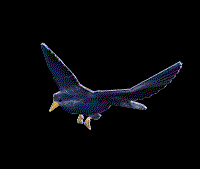
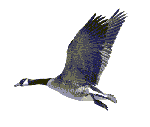




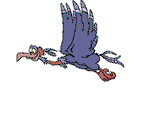



























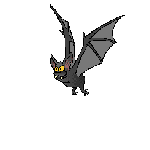



















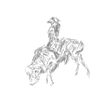























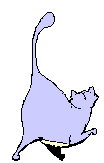















































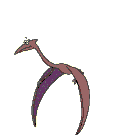







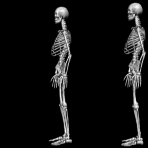

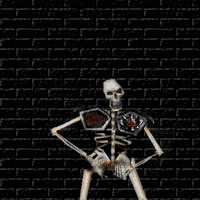
MAY ALL SENTIENT AND NON-SENTIENT BEINGS BE EVER HAPPY WELL AND SECURE
§
53. {Iti 3.4; Iti 47}
This was said by the Blessed One, said by the Arahant, so I
have heard: “There are these three
feelings. Which three? A feeling of pleasure, a feeling of pain, a feeling of
neither pleasure nor pain. A feeling of pleasure should be seen as stressful. A
feeling of pain should be seen as an arrow. A feeling of neither pleasure nor
pain should be seen as inconstant. When a monk has seen a feeling of pleasure
as stressful, a feeling of pain as an arrow, and a feeling of neither pleasure
nor pain as inconstant, then he is called a monk who is noble, who has seen
rightly, who has cut off craving, destroyed the fetters, and who — from the
right breaking-through of conceit — has put an end to suffering &
stress.”
Whoever sees pleasure as stress, sees pain as an arrow, sees
peaceful neither-pleasure-nor-pain as inconstant: he is a monk who’s seen
rightly. From that he is there set free. A master of direct knowing, at peace,
he is a sage gone beyond bonds.













